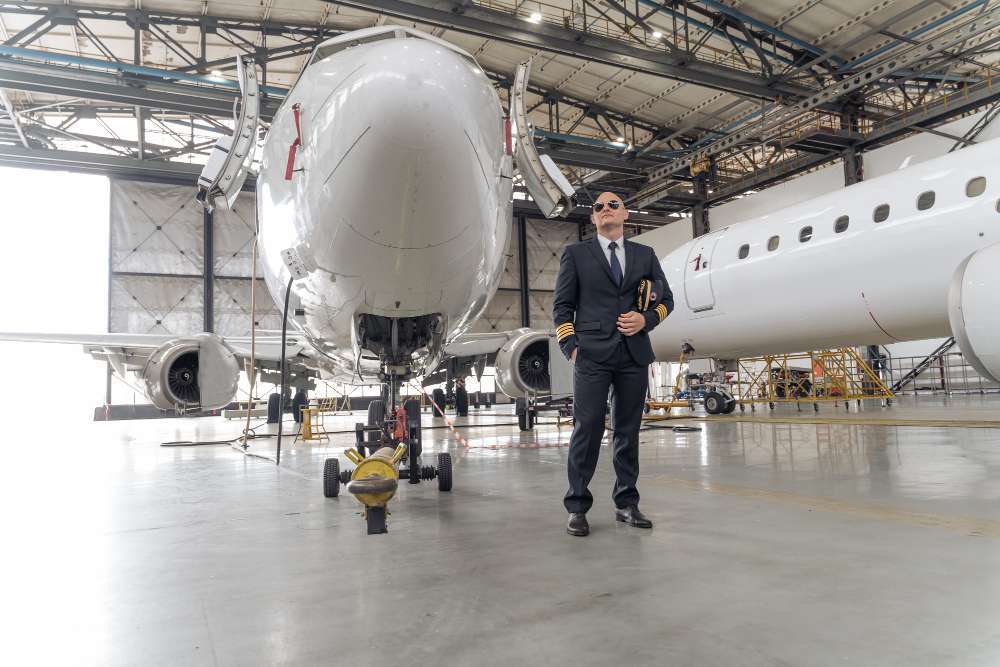The aerospace industry represents one of the most dynamic and impactful sectors of modern engineering, driving advancements that shape the way we travel, defend, and explore. A career in aerospace innovation offers a unique blend of challenges and opportunities, attracting individuals passionate about pushing technological boundaries. This comprehensive guide delves into the myriad benefits of pursuing a career in this exciting field, from job market trends to future technologies.

Job Market Trends in Aerospace
The aerospace industry is experiencing robust growth, fueled by increased demand for commercial aircraft, defense systems, and space exploration initiatives. According to industry reports, the global aerospace market is projected to reach $430 billion by 2027, driven by advancements in aircraft design, propulsion systems, and sustainable technologies. Key players like Boeing, Airbus, Lockheed Martin, and emerging startups are constantly seeking skilled professionals to innovate and lead. Geographic hotspots such as Seattle, Toulouse, and Bangalore are becoming central hubs for aerospace careers, offering numerous opportunities for engineers, designers, and technicians.
Education and Training Requirements
A solid educational foundation is essential for a successful career in aerospace innovation. Most positions require at least a bachelor’s degree in aerospace engineering, mechanical engineering, or a related field. Specialized training and certifications can further enhance job prospects. Institutions like MIT, Caltech, and Stanford offer world-class aerospace programs, equipping students with the latest knowledge and skills. The Aerospace: Innovations in Aviation course is designed to bridge the gap between theoretical knowledge and practical application, providing hands-on experience with cutting-edge technologies.
Salary and Benefits
A career in aerospace is not only intellectually rewarding but also financially lucrative. The average salary for aerospace engineers in the United States is approximately $118,000 per year, with experienced professionals and those in leadership roles earning significantly more. In addition to competitive salaries, aerospace companies offer comprehensive benefits packages, including health insurance, retirement plans, and performance bonuses. These financial incentives, combined with the prestige associated with working in a high-tech industry, make aerospace an attractive career choice.
Work-Life Balance
While the aerospace industry is known for its high-pressure environment and demanding projects, many companies are increasingly prioritizing work-life balance. Flexible work schedules, telecommuting options, and robust support systems help employees manage personal and professional responsibilities. Organizations recognize that maintaining a healthy work-life balance is crucial for sustaining innovation and productivity. By enrolling in the Aerospace: Innovations in Aviation course, individuals can gain insights into how to effectively navigate these demands and achieve a harmonious balance.
Job Stability
The aerospace sector offers remarkable job stability, driven by continuous technological advancements and long-term government contracts. Defense and space exploration programs, in particular, provide sustained employment opportunities. The resilience of the aerospace industry is evident from its ability to weather economic downturns and emerge stronger. This stability ensures that professionals in the field can enjoy long-term career growth and development.
Networking Opportunities
Networking is a vital component of career advancement in aerospace. Professional organizations such as the American Institute of Aeronautics and Astronautics (AIAA) and the Royal Aeronautical Society (RAeS) offer valuable platforms for connecting with industry leaders and peers. Attending conferences, workshops, and seminars allows professionals to stay updated on the latest trends and technologies. The Aerospace: Innovations in Aviation course includes networking sessions that facilitate meaningful interactions and collaborations, helping participants build a strong professional network.
Industry Specifics
The aerospace industry is multifaceted, encompassing various sectors such as commercial aviation, defense, and space exploration. Each sector presents unique challenges and opportunities. For instance, commercial aviation focuses on developing fuel-efficient aircraft and enhancing passenger safety, while the defense sector prioritizes advanced weaponry and surveillance systems. Space exploration aims to expand human presence beyond Earth, driving innovations in propulsion and habitat technologies. Understanding these specifics is crucial for professionals to tailor their expertise to the relevant sector.
Skills Gap Analysis
Despite the growing demand for aerospace professionals, there is a noticeable skills gap in the industry. Critical areas such as artificial intelligence, robotics, and sustainable engineering lack sufficient expertise. Bridging this gap requires continuous learning and skill development. The Aerospace: Innovations in Aviation course addresses these needs by offering specialized modules on emerging technologies and their applications in aerospace. This targeted training ensures that participants are well-equipped to meet industry demands.
Future Trends and Technology
The future of aerospace is shaped by groundbreaking technologies such as artificial intelligence, unmanned aerial systems, and sustainable aviation fuels. AI is revolutionizing aircraft design and maintenance, enabling predictive analytics and autonomous operations. Unmanned aerial systems are transforming logistics and surveillance, offering new possibilities for both commercial and defense applications. Sustainable aviation fuels are reducing the carbon footprint of air travel, aligning with global environmental goals. Staying abreast of these trends is essential for professionals to remain competitive and innovative.
Risk Assessment
Risk management is a critical aspect of aerospace engineering. The complexity of aerospace systems and the high stakes involved necessitate rigorous safety and compliance protocols. Professionals must be adept at identifying potential risks, implementing mitigation strategies, and ensuring adherence to international standards. The Aerospace: Innovations in Aviation course includes comprehensive training on risk assessment, preparing participants to effectively manage and mitigate risks in their projects.
Additional Resources:
- Unlocking the Future: A Career in 3D Printing Applications in Product Design
- Unlocking Your Potential: Exploring Career Opportunities in Personal Development and Self-Improvement
- Master Your Wealth: Exploring Careers in Personal Finance and Investment
- Building Wealth, Building Futures: Exploring Careers in Personal Finance and Wealth Management
- Navigating the Cosmos: Exploring Careers in Planetary Science and Exploration
- Shaping the Future: A Career in Education
- Behind the Scenes: A Career in Film Studies
- Mastering Money: A Career in Financial Literacy and Money Management
- Streamlining Success: The Advantages of Pursuing a Course in Industrial Automation
- Introduction to Accounting Principles
- Unlocking the Future: A Career in 3D Printing Applications in Product Design
- Unlocking Your Potential: Exploring Career Opportunities in Personal Development and Self-Improvement
- Master Your Wealth: Exploring Careers in Personal Finance and Investment
- Building Wealth, Building Futures: Exploring Careers in Personal Finance and Wealth Management
- Navigating the Cosmos: Exploring Careers in Planetary Science and Exploration
- Shaping the Future: A Career in Education
- Behind the Scenes: A Career in Film Studies
- Mastering Money: A Career in Financial Literacy and Money Management
- Streamlining Success: The Advantages of Pursuing a Course in Industrial Automation
- Introduction to Accounting Principles
Table of Contents
Categories:
Latest Posts:
FAQs
Q: What are the primary educational requirements for a career in aerospace innovation?
A: A bachelor’s degree in aerospace engineering, mechanical engineering, or a related field is typically required. Specialized training and certifications can further enhance career prospects.
Q: How does the Aerospace: Innovations in Aviation course help in career advancement?
A: The course provides hands-on experience with cutting-edge technologies, bridging the gap between theoretical knowledge and practical application. It also includes networking opportunities and modules on emerging trends.
Q: What is the average salary for aerospace professionals?
A: The average salary for aerospace engineers in the United States is approximately $118,000 per year, with potential for higher earnings in senior roles.
Q: What are the key sectors within the aerospace industry?
A: The aerospace industry includes sectors such as commercial aviation, defense, and space exploration, each with unique challenges and opportunities.
Q: What are the future trends shaping the aerospace industry?
A: Key trends include artificial intelligence, unmanned aerial systems, and sustainable aviation fuels, all of which are driving innovation and transformation in the industry.
